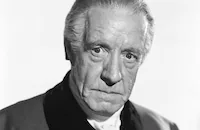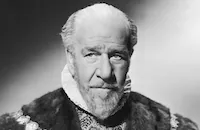The Mystery of Mr. X

Brief Synopsis
Cast & Crew
Edgar Selwyn
Robert Montgomery
Elizabeth Allen
Lewis Stone
Ralph Forbes
Henry Stephenson
Film Details
Technical Specs

Synopsis
After four constables are stabbed to death in four different sections of London by a serial killer who calls himself "Mr. X," Sir Herbert Frensham, the beleagured police commissioner, confers with Inspector Connor about how to stop the killings. With no true leads, however, the police fail to prevent a fifth murder, which occurs at the same time and near the same place as the robbery of the valuable Drayton diamond. Aware that the police believe that Mr. X has the diamond, the true thieves, Nick Revel and his cohorts--taxi driver Joseph Horatio Palmer and insurance clerk Hutchinson--decide to wait until Mr. X is apprehended before collecting a 10,000 pound insurance reward on the gem. Soon after, a sixth murder occurs, and Sir Christopher Marche, the fiancé of the commissioner's daughter Jane, is arrested because he had drunkenly assaulted the constable just before he was slain. Anxious to speed up Mr. X's capture, Nick and Palmer conspire to testify on Marche's behalf and state in court that, while driving by in Palmer's cab, they saw Marche leave the scene before the murder was committed. Nick then ingratiates himself with Jane and connives to have dinner with her father in order to suggest a way of catching the killer. Although Sir Herbert is impressed by Nick's idea of trapping Mr. X by announcing in the newspapers that his last victim survived the attack and can identify his attacker, Connor is suspicious of the thief and orders a background check on him. While Nick romances Jane away from Marche, Connor searches Nick's flat and tries to catch him with the jewel by having an undercover policeman accuse him of theft. Before he is taken to police headquarters, however, the wiley Nick passes the diamond to Palmer, who in turn gives the jewel to Hutchinson. In a pub, a nervous Hutchinson returns the jewel by dropping it in Nick's beer, which Nick then swallows under the nose of an undercover policeman. Although Nick eludes the police by driving off with an unsuspecting Jane, Connor sends the already jealous Marche to Nick's flat. Outraged by Jane's presence in Nick's flat, Marche breaks their engagement, and Nick, realizing that he loves Jane, decides to end his life of crime and return the diamond. After Nick mails the jewel with a typed note from "Mr. X," Connor picks up Hutchinson and begins to interrogate him. As Hutchinson nears the point of confession, Nick deduces that Mr. X, who has announced his next murder for that night, has been using an "x" pattern to determine his murder locations. Confident he knows where Mr. X will strike next, Nick disguises himself as a constable, sneaks out of his police-guarded flat and rushes across town. After a fierce fight, Nick fatally wounds Mr. X, who then confesses to the police before dying that he committed the murders as revenge for a previous conviction. Hailed as a hero, the reformed Nick poses for reporters' photographs with the now-vindicated commissioner and embraces a loving Jane.

Director
Edgar Selwyn
Cast

Robert Montgomery

Elizabeth Allen

Lewis Stone

Ralph Forbes

Henry Stephenson
Forrester Harvey

Ivan Simpson

Leonard Mudie

Alec B. Francis

Charles Irwin
Colin Kenny
Pearl Varvell
Henry Mowbray
Barlowe Borland
Alfred Cross
Olaf Hytten
Norman Ainsley
Terry Spencer
Victor Gammon
Captain Francis
Eric Wilton
Richard Lancaster
Robert A'dair
Pat Moriarity
Harrington Reynolds
Milton Royce
William Stack
Claude King
Douglas Gordon

Raymond Milland
Clive Morgan
Montague Shaw
John Power
Raymond Lawrence
Pat Somerset
Crew
Adrian
Richard Boleslavsky
Monckton Hoffe
Philip Macdonald
Oliver T. Marsh
Merrill Pye
Howard Emmett Rogers
Douglas Shearer
Lawrence Weingarten
Fred Wilcox
Edwin B. Willis
Hugh Wynn

Film Details
Technical Specs

Articles
The Mystery of Mr. X
One historian who did write about this movie in later years was the renowned William K. Everson. In his "Rediscovery" column in a 1980s edition of Films in Review, Everson wrote, "Apart from its thrill and melodrama content it is a beautifully civilized production, full of sophisticated writing and elegant playing. Even if it wasn't a good and absorbing thriller, it would be a pleasure just to watch and listen to... Particularly effective is a sequence in a pub wherein the jewel has been hastily dumped into a glass of ale when the police arrive. The scene ends with the jewel resting cozily at the bottom of one of two virtually empty glasses, presenting Montgomery with the predicament of having to gulp out of two glasses (one of which is not his), talk the overeager barmaid out of taking them away to bring him a fresh drink, and at the same time not arouse the suspicion of onlookers and the police. It's a particularly neat sequence, all the more effective for being underplayed and not tricked-up with distorted angles."
The Mystery of Mr. X was well-received in 1934, too, with Variety calling it "...Well made, plausible, heavy on the romance, this mystery meller is replete with all the favorable elements for mixed audience appeal... The romance is ably sustained by Montgomery and Elizabeth Allan, an ingratiating ingénue...There's not a lagging moment in the 85 minutes, which are packed with fast dialog and accelerated action."
Shooting went smoothly, though the film's ending was rewritten and reshot after a preview audience did not like the original resolution of the romance. Since director Edgar Selwyn was in New York at the time, Richard Boleslawski stepped in to direct the new ending.
Edgar Selwyn was an interesting fellow. He directed only eight films, including The Sin of Madelon Claudet (1931) and Skyscraper Souls (1932), a superb Warren William vehicle. But his career in show business had begun long before and actually had profound effects in shaping the Hollywood landscape. From a penniless and suicidal early adulthood, Selwyn turned his life around in a big way courtesy of the New York theater world, rising from a job as usher to become a successful actor in the 1890s, a playwright in the early 1900s, and a theatrical producer shortly thereafter. In 1912 he also became a movie producer, forming the All-Star Feature Films Company, which in 1917 merged with Samuel Goldfish's studio to become Goldwyn Pictures Corp., a precursor of MGM. (Selwyn, then, was directly responsible for the "wyn" in Goldwyn and partially responsible for the "G" in MGM.) All the while, Selwyn's plays had been adapted into movies pretty much continuously since 1915. After The Mystery of Mr. X, his last movie as director, Selwyn turned to producing. When he died in 1944 of a cerebral hemorrhage, the honorary pallbearers at his funeral included Louis B. Mayer, Arthur Freed, Ira Gershwin, Samuel Goldwyn, Cecil B. DeMille and Harry Cohen, among many other luminaries - a sign of the high standing he had achieved in the industry.
Some casting notes: Montgomery's daughter Elizabeth, who would find fame 35 years later as Samantha in TV's Bewitched, was born just months before filming began. Montgomery was married at the time to Elizabeth Bryan Allen - no relation to this film's leading lady, Elizabeth Allan. Contrary to popular belief, Ray Milland is not in The Mystery of Mr. X. He is listed in extended printed credits (as Raymond Milland) so it is possible he had a bit part which was left on the cutting room floor. The Mystery of Mr. X was remade in 1952 as The Hour of 13, starring Peter Lawford.
Producer: Lawrence Weingarten
Director: Edgar Selwyn
Screenplay: Howard Emmett Rogers, based on the novel by Philip MacDonald
Cinematography: Oliver T. Marsh
Editing: Hugh Wynn
Costume Design: Adrian
Art Direction: Merrill Pye
Cast: Robert Montgomery (Nicholas Revel), Elizabeth Allen (Jane Frensham), Lewis Stone (Supt. Connor), Ralph Forbes (Sir Christopher Marche), Henry Stephenson (Sir Herbert Frensham), Forrester Harvey (Joseph Horatio Palmer), Ivan F. Simpson (Hutch Hutchinson).
BW-84m. Closed captioning.
by Jeremy Arnold

The Mystery of Mr. X
Quotes
Trivia
Notes
The novel on which this film is based was published in America as The Mystery of the Dead Police, which also was the film's working title. The American edition and subsequent British editions are credited to Philip MacDonald, Martin Porlock's real name. An August 1933 Hollywood Reporter news item announced that director Edgar Selwyn was collaborating on the film's screenplay with writer Howard Emmett Rogers. The exact nature of Selwyn's contribution, if any, has not been determined. According to a January 1934 Daily Variety news item, M-G-M ordered that the film's ending be rewritten and reshot based on the reactions of a preview audience. In the first version of the story, "Nick" apparently did not get "Jane." Because Selwyn was in New York, Richard Boleslavsky directed the new scenes. According to a December 1933 Film Daily news item, The Pacific Title and Art studio prepared a trailer for the film, which Pete Smith supervised. In the news item, the film is referred to as Murders of Secret Police, but this probably is an error and not a working title. In 1952, Harold French directed Peter Lawford and Dawn Addams in The Hour of 13, an M-G-M remake of MacDonald's story. That film was shot in England.















